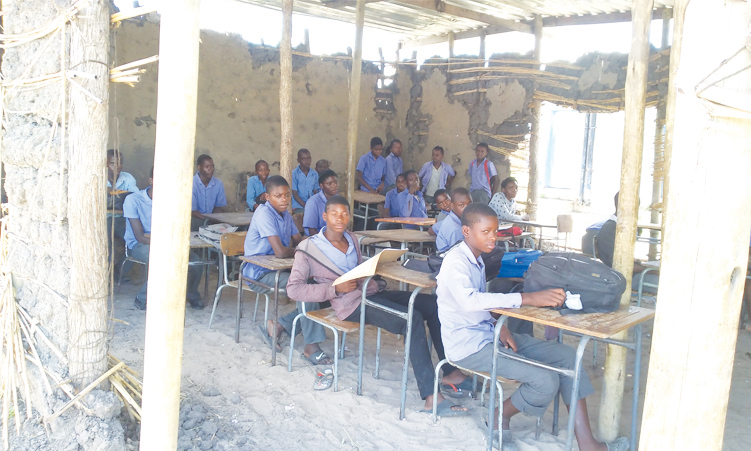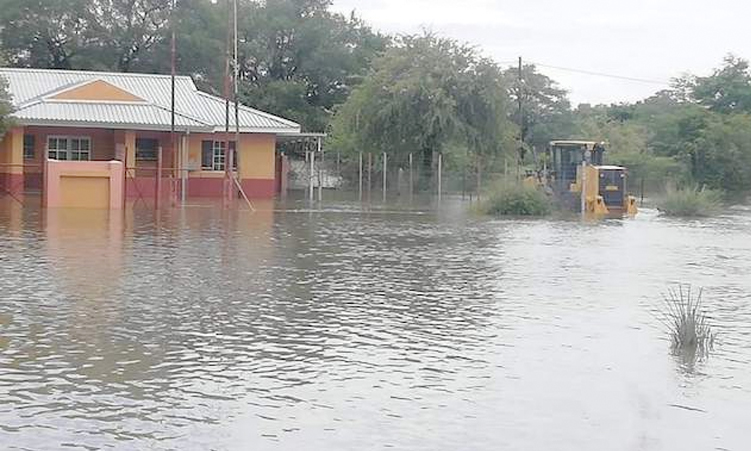Windhoek has seen about 20 fashion shows in the last few months. In a small country such as ours, this is perhaps a sure sign that the Namibian fashion industry may be bursting at the seams.
Like the fledgling music industry which has undoubtedly become a sought after career option for a number of local youngsters, a career in fashion is also becoming a desirable option for young creative Namibians.The music industry has dragged the local fashion industry into the limelight, kicking and screaming. Urban wear has taken off dramatically and music labels such as Gazza Music Productions (GMP) and Mshasho (The Dogg’s label) are supplementing their profits with with income from their street wear labels. Fashion shows normally feature local musicians as part of the entertainment. It is also not uncommon for a fashion show to be staged in a bar or night club. The fashion industry is flooded with new blood as the Katutura-based College of the Arts contributes at least 10 young designing graduates per year. The University of Namibia also continues to produce about 12 graduates per year, while self-taught designers and those studying in South Africa and elsewhere strengthen the numbers.At last count there were about 15 modelling agencies around the country, each of varying pedigree, with more being established on an almost daily basis. The absence of a regulating or affiliating body for these agencies, designers and models, make it difficult to establish the fashion industry’s contribution to Namibia’s Gross Domestic Product (GDP). Organisations such as the Pambili Association, steered by well respected and revered designer, Melanie Harteveld Becker – promotes local designs on behalf of a range of young designers. The association assists their members with the marketing and sale of their garments, both within Namibia and internationally. Scandinavian countries like Finland and Norway, are said to be the biggest customers of Namibian garments. While a large number of younger designers seem to be content to operate from the comfort of their own homes, designing garments for friends or family and marketing their clothes through word of mouth, more established designers, who can afford to, operate from a select few boutiques in and around Windhoek. But why is local couture all of a sudden so popular? Well known designer, Hem Matsi of Hemline Fashions probably sums it up best when she says, ‘Namibians are developing a proudly Namibian attitude and everybody wants to be unique. You can’t really be unique if you wear mass produced garments.’Evening, casual and cocktail garments seem to be the biggest selling products while the demand for lingerie also seems to be growing, especially when one considers that lingerie seems to be the hottest items on the runway. These fashion shows, while criticised from some quarters as an effort by designers to make easy money by cashing in on entrance fees, are held in high esteem by their organisers. They explained that their biggest objective with the shows is to introduce their products to the public. The rise of the fashion industry and the increase in fashion shows have certainly helped local models to improve their skills – such as personal grooming, catwalk modelling and maintaining a professional portfolio. ‘Our fashion industry is making steady progress and it is very important that we support our own people – choosing to work with local designers and beauty and hair salons to guarantee their success,’ said Cheyenne Jimmy, who struts her stuff on the catwalk for Zambezi Modelling Academy. Jimmy’s sentiments were echoed by Melanie Harteveld Becker, one of Namibia’s most high profile designers. ‘I think Namibia has some very good designers and there are many gifted young designers emerging. The future of local fashion is in very good hands because some of the young talent is unbelievable.’ She mentioned Chakirra Claasen, Jacques Jansen van Vuuren, Maria Calie and Patricia Mtambanika as some of the most talented young designers she has worked with.Jimmy said that it is very costly to be a fashionista. ‘have to look good at all times,’ she explained, adding that ‘starting from your hair down to your toes – you have to look presentable. We are modelling other people’s clothes and it means that we have to look at our best all the time.’As a spin off effect, local hair and beauty salons are experiencing a surge in their clientèle. Formal markets like Horse Shoe Market, Soweto Market and Oshetu Community Market (also known as Single Quarters) in Katutura are boasting close to 100 hair salons.Jimmy, the young beauty from Katutura is particularly impressed and thrilled by local fashion designers whom she describes as very talented people.It’s not all fake smiles, red pouts and air kisses that define the fashion industry though, like any booming industry – the fashion scene has also received its fair share of criticism.Fashion lovers often complain that the organisers send half finished garments onto the runway. ‘This should ‘ says Matsi. ‘ People pay for fashion shows. It is our responsibility to stage proper and high standard fashion shows with good quality garments.’ She explained that time constraints may lead to sub-standard clothes making it on to the runway. ‘We sometimes don’t have enough time to finish our garments.’ Not exactly walking on pins and needles – Hem rips into the media who promote fashion shows and upcoming designers. ‘Its good to give all a fair chance of exposure, I just don’t agree with a couple of fashion shows featured and one can clearly see that the clothes are rubbish. This will not help the industry grow. Some of those outfits are really shocking.’Players in the industry point a finger towards the organisers of Miss Namibia, who they say, overlook local designers in favour of using known South African or international designers. Seasoned designer Cynthia Schimming, owner of C’est Moi Designing and the Exclusively Cynthia Schimming line said, ‘have stopped working with the organisers of Miss Namibia because of the way they treat local designers. South African designers are considered above our own people which is really disappointing. We have nurtures top fashion designers to develop local talent and creativity but for reasons known only to the pageant organisers, local designers are not considered good enough,’ she fumed.Cynthia made international headlines in 1998 when her designs finished fifth at the Unesco Design Expo in Japan during a competition which saw designers from 250 countries in the world competing for top spot.’The talent is there but they need our support. People must show support by buying local said Becker who has been making a living from fashion for over 15 years.She said that many young Namibians like to wear clothes of local designers now, but yet not enough Namibians are wearing local designers. ‘Local is lekker,’ said Becker who invited four young designers to accompany her to Africa Fashion Week, held in Johannesburg, South Africa recently.Meanwhile, it’s not just the industry that is expanding, even plus sized models have found their little ray of light on local catwalks. Liina Nandago, the pioneer of plus size modelling in the country, also expressed her delight at the developments within the local fashion industry, adding that despite the slow pace, local fashion players were opening up to models of all sizes.’We are still struggling to receive the same treatment as our smaller sisters but I can assure you that we are making inroads into the fashion world. Our designers still think that only slender is beautiful,’ she protested though.Who knows maybe in a few years our fashion industry could put the final stitches on inferior knock-off’s from the east and cut the over prized mass produced garments from the west to size.
Stay informed with The Namibian – your source for credible journalism. Get in-depth reporting and opinions for
only N$85 a month. Invest in journalism, invest in democracy –
Subscribe Now!










